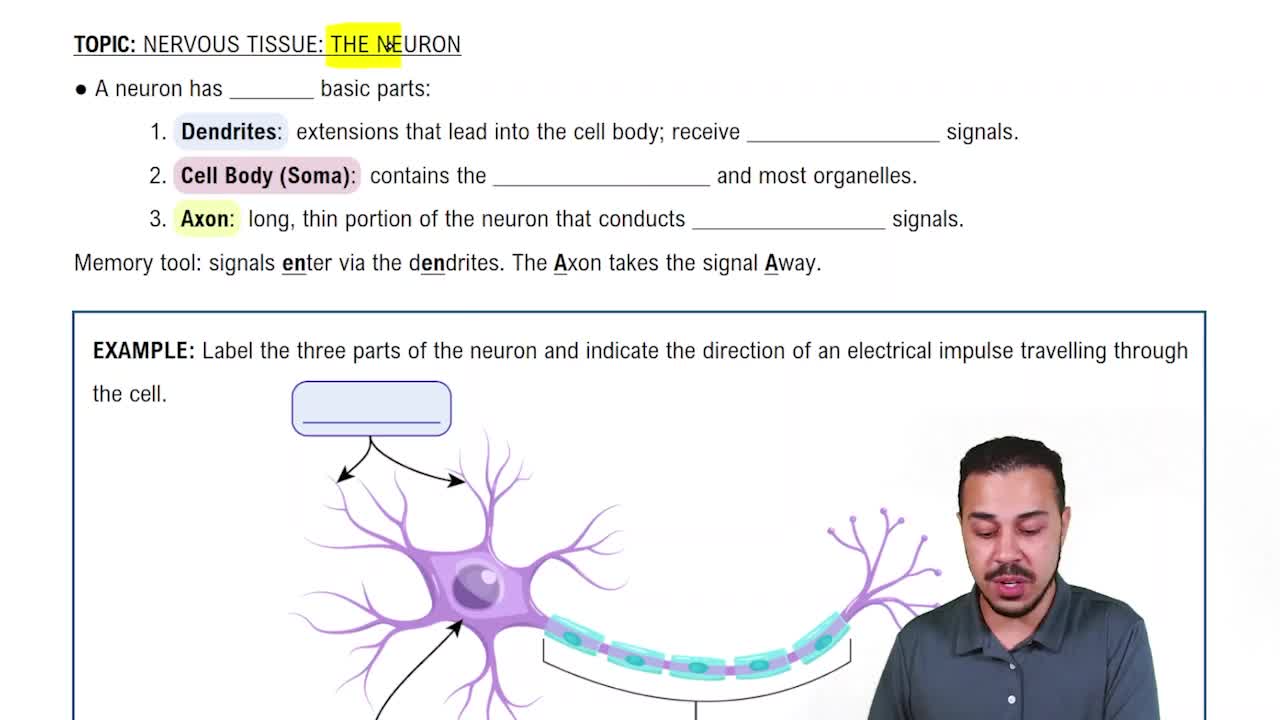Mark the following statements as true or false. If a statement is false, correct it to make a true statement.
b. The somatic motor division of the PNS consists of lower motor neurons that directly innervate skeletal muscle fibers.
 Verified step by step guidance
Verified step by step guidance



Mark the following statements as true or false. If a statement is false, correct it to make a true statement.
b. The somatic motor division of the PNS consists of lower motor neurons that directly innervate skeletal muscle fibers.
Mark the following statements as true or false. If a statement is false, correct it to make a true statement.
d. The term nerve is the equivalent of the term neuron.
Place the following sequence of events for the detection of somatic sensation in the proper order. Place a 1 by the first event, a 2 by the second event, and so on.
a. ______The central process transmits the action potential to a second-order sensory neuron in the CNS.
b. ______The action potential is transferred to the central process in the posterior root ganglion.
c. ______The stimulus triggers an action potential.
d. ______The signal is transferred to other CNS sensory neurons for eventual perception and interpretation.
e. ______The action potential is propagated along the peripheral process of the neuron.
List and describe the basic steps involved in producing movement, beginning with the upper motor neurons in the cerebral cortex.
The lower motor neurons that innervate contractile skeletal muscle fibers are called:
a. α-motor neurons.
b. β-motor neurons.
c. upper motor neurons.
d. γ-motor neurons.
Fill in the blanks:______detect the degree to which a muscle is stretched, whereas______detect the force of a muscle contraction.